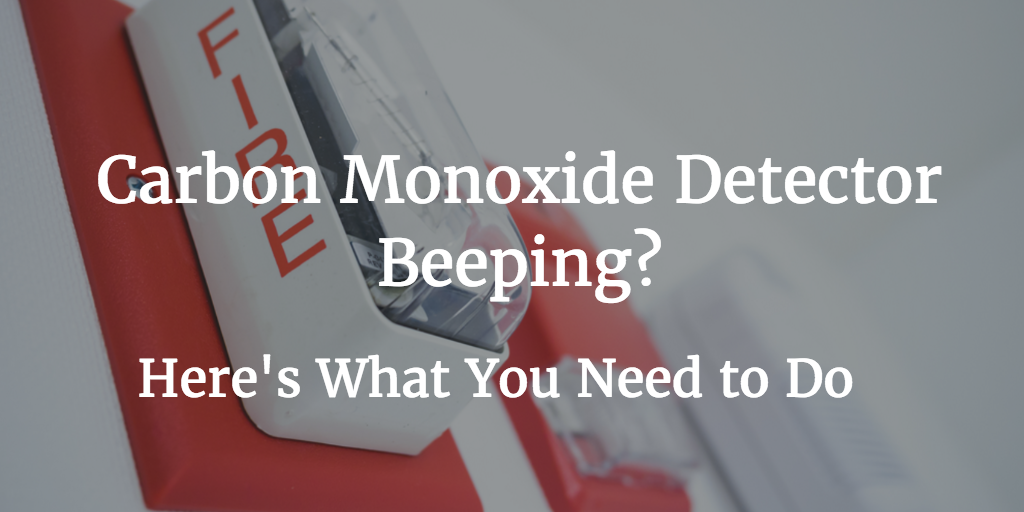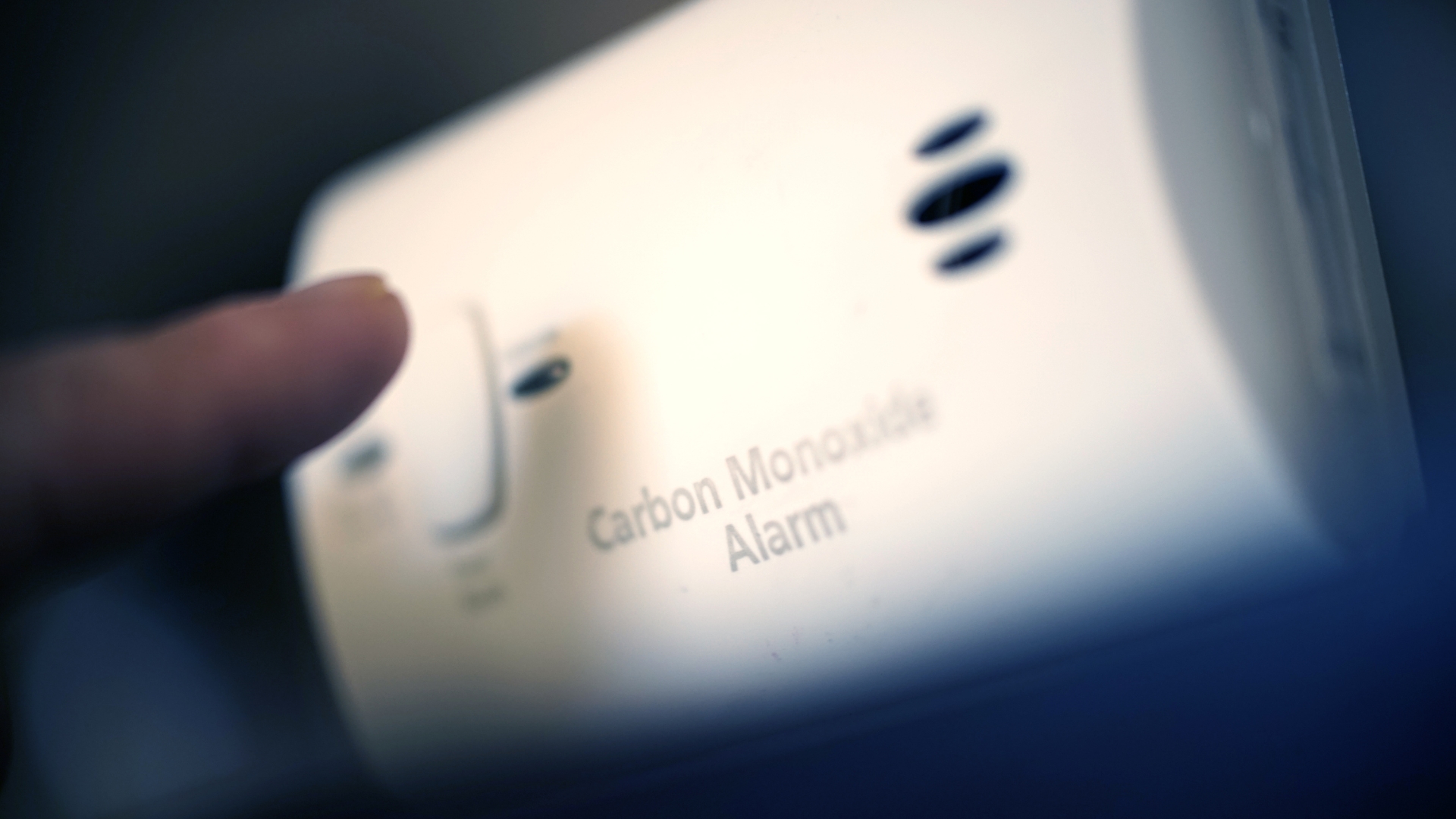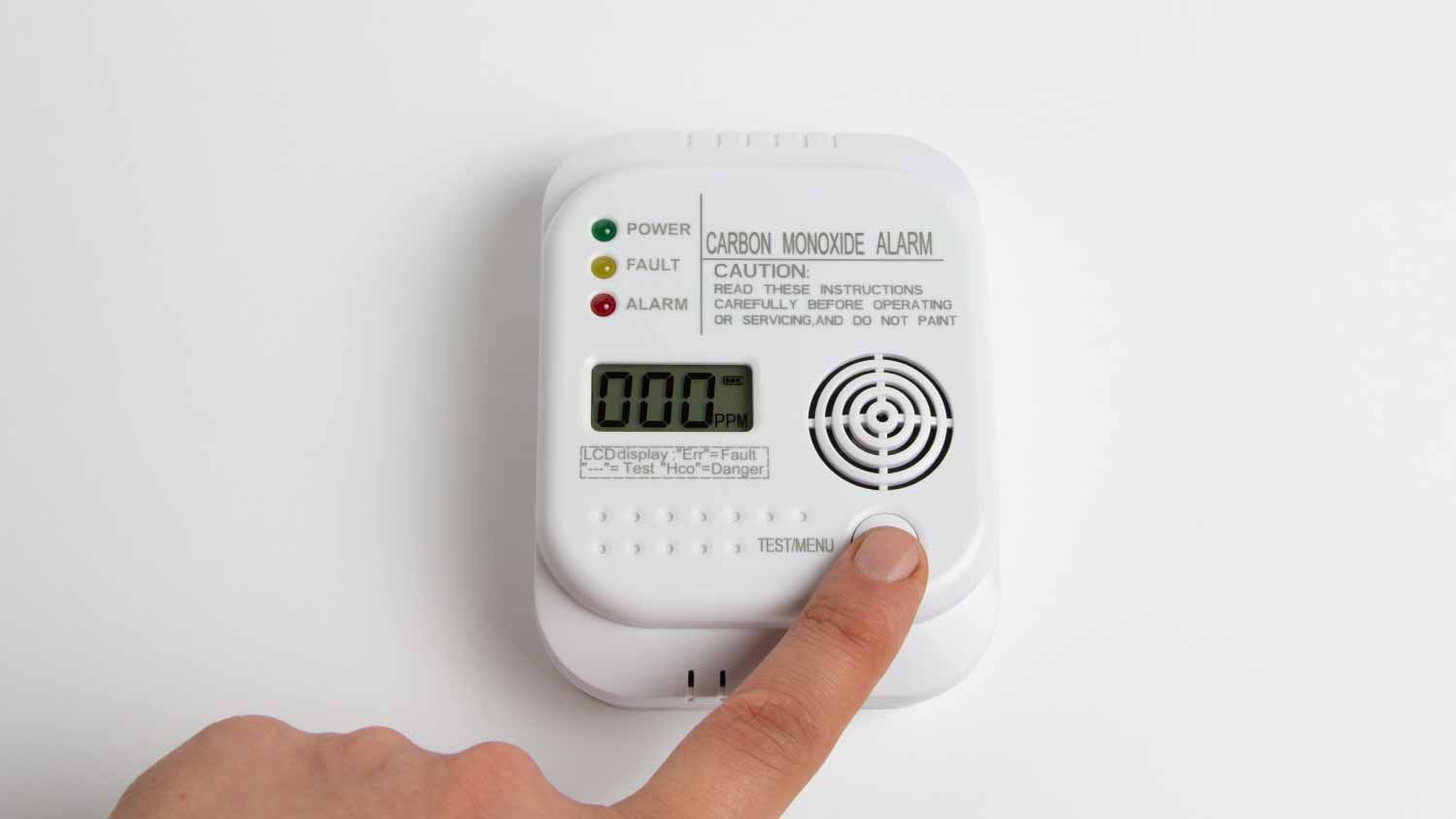Why Does A Carbon Monoxide Detector Beep

A common household headache? Your carbon monoxide (CO) detector chirping at you. This isn't just annoying; it's a signal that demands your immediate attention. But before you panic, know that many beeps aren't necessarily indicative of a CO leak. This guide will walk you through troubleshooting the beeping and help you determine if it's a false alarm or a genuine emergency.
Understanding the Beep: What is Your CO Detector Trying to Tell You?
Carbon monoxide detectors are designed to alert you to the presence of this odorless, colorless, and deadly gas. However, those beeps can mean a few different things, and it's crucial to understand the difference.
Different Beeps, Different Meanings
The most common reasons for a CO detector to beep are:
- Low Battery: Usually a single, short beep every 30-60 seconds. This is the most frequent culprit.
- End of Life: Typically five beeps followed by a pause, then repeating. CO detectors have a limited lifespan (usually 5-10 years), and this indicates it's time to replace the unit.
- Malfunction: Can manifest as erratic beeping patterns or constant beeping. This signals a fault within the detector itself.
- Actual CO Detection: Usually a series of four or five beeps, often accompanied by a flashing light. This is a serious emergency.
Crucially, refer to your detector's user manual to confirm the specific beep pattern and its meaning. Manuals often have detailed troubleshooting sections.
Step-by-Step Troubleshooting Guide: Silencing the Beep
Before you call the fire department or a professional, try these troubleshooting steps. Remember to prioritize safety. If you suspect a CO leak (headache, dizziness, nausea), evacuate the premises immediately and call emergency services from a safe location.
Step 1: Identifying the Beep Pattern
Carefully listen to the beeping. Is it a single chirp, a series of beeps, or a constant tone? Note the frequency of the beeps (every 30 seconds, every minute, etc.). This information is vital for diagnosis. Compare the pattern to the descriptions in your user manual.
Step 2: The Low Battery Test (Most Common Issue)
If the detector is chirping intermittently (usually a single beep), low battery is the most likely cause. Here’s how to tackle it:
- Locate the Battery Compartment: It’s usually on the back or side of the detector.
- Replace the Battery: Use the correct type of battery as specified in the manual (usually AA or 9V). Always use a new, high-quality battery.
- Test the Detector: Press the test button. It should emit a loud alarm sound.
- Monitor: If the chirping stops after replacing the battery, you've solved the problem. If it continues, move on to the next step.
Step 3: Cleaning the Detector
Dust and debris can sometimes interfere with the sensor’s function, causing false alarms. Here’s how to clean your detector safely:
- Turn off Power: If the detector is hardwired, disconnect it from the electrical circuit breaker. For battery-operated units, remove the battery.
- Gently Vacuum: Use a soft brush attachment on your vacuum cleaner to carefully remove dust and cobwebs from the detector's vents.
- Wipe Down: Use a slightly damp (not wet!) cloth to wipe the exterior of the detector. Avoid getting any moisture inside the unit.
- Reassemble and Test: Reinstall the battery (or reconnect the hardwiring – consult a qualified electrician for electrical work if you are not comfortable or experienced) and press the test button.
Step 4: Checking the Detector’s Age
CO detectors have a limited lifespan, typically 5-10 years. Look for an expiration date on the detector itself (often on the back or side). If the detector is past its expiration date, it needs to be replaced. Even if it's not beeping due to end-of-life, replacing it is a safety precaution.
Step 5: Addressing Placement Issues
Improper placement can sometimes trigger false alarms. CO detectors should be placed:
- On each level of your home.
- Outside of sleeping areas.
- Away from fuel-burning appliances (furnaces, stoves, fireplaces) by at least 10 feet. (However, consult your detector's manual for specific recommendations as some are designed to be placed closer).
- Away from windows and doors.
- Not in dusty or humid areas.
If your detector is in a location that violates these guidelines, relocate it.
Step 6: Testing for Malfunction
If you've tried all the above steps and the detector continues to beep erratically, it's likely malfunctioning. In this case, replacement is the best option.
Step 7: Hardwired Detector Troubleshooting (Proceed with Caution!)
If your CO detector is hardwired, the troubleshooting process is slightly different, and requires extreme caution. If you are not comfortable working with electrical wiring, STOP and call a qualified electrician.
- Check the Circuit Breaker: Ensure the circuit breaker controlling the detector is not tripped. If it is, reset it. If it trips again immediately, there may be a short circuit, and you should call an electrician.
- Inspect the Wiring: Carefully examine the wiring connections to the detector. Look for loose wires, corrosion, or damage. If you find any issues, turn off the circuit breaker before attempting any repairs. Again, if you are not comfortable with electrical work, call an electrician.
- Test with Battery Backup: Even hardwired detectors often have a battery backup. Replace the battery to rule out a low battery issue in the backup system.
When to Call a Professional (and When to Evacuate Immediately)
While many CO detector issues can be resolved with simple DIY fixes, there are times when it's essential to call a professional or evacuate immediately:
Call a Professional (Electrician or HVAC Technician):
- Hardwired Detector Issues: If you're not comfortable working with electrical wiring, always call an electrician.
- Repeated Circuit Breaker Tripping: This indicates a potential electrical fault that needs professional attention.
- Suspected Malfunction After Troubleshooting: If you've tried all the steps above and the detector continues to malfunction, it needs to be replaced. An electrician can ensure proper installation.
Evacuate Immediately and Call Emergency Services (911 or Your Local Fire Department):
- Detector Alarm Sounds (Four or More Beeps): This indicates a potential CO leak. Don't try to troubleshoot; get everyone out of the house immediately.
- Symptoms of CO Poisoning: Headache, dizziness, nausea, shortness of breath, confusion, loss of consciousness. Even if the detector hasn't sounded, these symptoms warrant immediate evacuation and medical attention.
- Unknown Source of Alarm: If the alarm is sounding and you can't identify the cause, err on the side of caution and evacuate.
Preventative Measures: Keeping Your Home Safe
Regular maintenance and preventative measures can help minimize the risk of CO leaks and false alarms:
- Annual Furnace Inspection: Have your furnace inspected and cleaned annually by a qualified HVAC technician.
- Chimney Cleaning: Clean your chimney regularly to prevent blockages that can cause CO buildup.
- Proper Ventilation: Ensure proper ventilation when using fuel-burning appliances (stoves, fireplaces, generators).
- Never Use a Generator Indoors: Generators produce deadly CO and should never be used inside a home, garage, or shed.
- Regularly Test Your Detectors: Press the test button on your CO detectors at least once a month to ensure they are working properly.
- Replace Detectors Regularly: Adhere to the manufacturer's recommended replacement schedule (typically 5-10 years).
Choosing the Right CO Detector
When replacing your CO detector, consider these factors:
- Type: Choose between battery-operated, hardwired, or combination (hardwired with battery backup).
- Features: Look for features like digital displays, voice alarms, and interconnectivity (where multiple detectors communicate with each other).
- Certifications: Ensure the detector is certified by a recognized testing laboratory (e.g., UL, ETL).
- Placement Considerations: Consider the specific needs of your home and choose detectors that are suitable for the intended location (e.g., humidity-resistant detectors for bathrooms).
Empowering You to Stay Safe
Troubleshooting a beeping carbon monoxide detector doesn't have to be daunting. By understanding the different beep patterns, following a systematic troubleshooting process, and knowing when to call a professional, you can effectively address the issue and ensure the safety of your home and family. Remember, when in doubt, prioritize safety. If you suspect a CO leak, evacuate immediately and call emergency services. And don't hesitate to consult with qualified professionals for electrical or HVAC issues.










